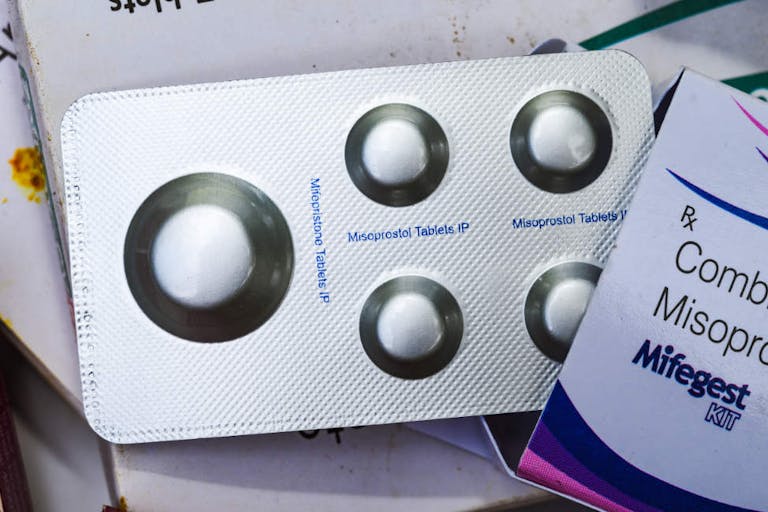
Vietnamese Catholics widen support for pregnant mothers
Angeline Tan
·
Canadian woman died of sepsis after taking the abortion pill
Rheanna Laderoute underwent a chemical abortion in Ontario and died just 10 days later after going into septic shock.
Laderoute was given the abortion pills at an abortion facility an hour away from her home.
Two weeks later, when she was still in pain and bleeding heavily, she went to the emergency room multiple times.
Doctors failed to diagnose her with a life-threatening infection, and she eventually became septic.
Despite hospital staff begging to have her sent to the intensive care unit (ICU), doctors refused and she eventually died.
The Globe and Mail reported the tragic details of Laderoute's story. In 2022, when she became pregnant at 19 years old, she told no one — not even her mother or her sister — and drove an hour to an abortion facility in Brampton, Ontario. There, she was given Mifegymiso, another name for the abortion pill regimen.
Chemical abortions are committed using two drugs: mifepristone, which first kills the preborn child by starving him or her of nutrients, and then misoprostol, which induces contractions and expels the body of the preborn baby.

After two weeks, Laderoute was still in excruciating pain and bleeding heavily, so she went to the emergency room at Southlake Regional Health Centre in her hometown of Newmarket.
During her first visit, doctors performed an ultrasound, which found no retained fetal or placental tissue. But they did no further testing beyond recommending her to a pregnancy clinic and then discharging her. The clinic apparently attempted one phone call to Laderoute, and when that failed, they did not follow up.
A week later, Laderoute went back to the emergency room, this time by ambulance. She was described as having a peritonitic abdomen, and she was noted by a nurse as crying while clutching her stomach. The doctor ordered imaging, bloodwork, and a urine sample. After the administration of morphine, Laderoute was in less pain. She was given oral antibiotics and painkillers, and was again discharged.
Laderoute returned to the emergency room for the third time the next day, showing numerous signs of sepsis, a life-threatening condition. She would have required IV antibiotics at this point, and eventually, she received them. But it took hours for doctors to see and evaluate her, and she didn't begin receiving the IV antibiotics until she had been at the hospital for over eight hours.
Article continues below
Dear Reader,
In 2026, Live Action is heading straight where the battle is fiercest: college campuses.
We have a bold initiative to establish 100 Live Action campus chapters within the next year, and your partnership will make it a success!
Your support today will help train and equip young leaders, bring Live Action’s educational content into academic environments, host on-campus events and debates, and empower students to challenge the pro-abortion status quo with truth and compassion.
Invest in pro-life grassroots outreach and cultural formation with your DOUBLED year-end gift!
Nurses noted that Laderoute's condition was declining, and repeatedly suggested she be transferred to the ICU, but those recommendations were ignored. They also asked the ICU doctor on call, Dr. Albert Yun-Pai Chang, to insert a central line as her veins were collapsing, but he refused, and also continued to refuse admission to the ICU.
Only once her heart stopped, with medical staff working 22 minutes to resuscitate her, was she taken to the ICU. But by then it was too late; she had gone into multi-organ failure, and after two more cardiac arrests, she eventually died.
Sepsis and infection are known complications of the abortion pill regimen. Though the abortion industry claims it is safer than Tylenol, mifepristone has a black box warning for sepsis, and complications are much more common than many women realize.
A recent analysis found a 22 times higher rate of “serious adverse events” (complications) resulting from mifepristone (the abortion pill) than what is currently reported by the FDA. Nearly 11% of women experience these complications, which include hemorrhaging, infection, sepsis, transfusions, hospitalization, and more. Another recent study, conducted in Ireland on data from between January 2019 and December 2022, found that 12% of women who underwent chemical abortions experienced complications serious enough to warrant trips to the emergency room, and 16% suffered incomplete abortions. Another study showed that women were consistently unprepared for how painful the chemical abortion process would be.
The events leading up to Laderoute's death have similarities to those surrounding the death of Nevaeh Crain, a Texas teenager who died of sepsis due to suspected medical negligence. In both cases, the women visited emergency departments multiple times before their deaths, yet propaganda media blamed Crain's death during pregnancy on the laws of her pro-life state.
Laderoute's death makes clear that sepsis can occur anywhere — not just in pro-life jurisdictions — and signs of it are sometimes overlooked or downplayed, regardless of laws.
Laderoute's death is a horrible tragedy, but she did not have to die. Women deserve to know what they are risking during chemical abortions, and that it could lead to their deaths.
Live Action News is pro-life news and commentary from a pro-life perspective.
Contact editor@liveaction.org for questions, corrections, or if you are seeking permission to reprint any Live Action News content.
Guest Articles: To submit a guest article to Live Action News, email editor@liveaction.org with an attached Word document of 800-1000 words. Please also attach any photos relevant to your submission if applicable. If your submission is accepted for publication, you will be notified within three weeks. Guest articles are not compensated (see our Open License Agreement). Thank you for your interest in Live Action News!

Angeline Tan
·
Human Interest
Andrea Trudden
·
Abortion Pill
Carole Novielli
·
Abortion Pill
Carole Novielli
·
Abortion Pill
Carole Novielli
·
Abortion Pill
Bridget Sielicki
·
Analysis
Cassy Cooke
·
Analysis
Cassy Cooke
·
Analysis
Cassy Cooke
·
Analysis
Cassy Cooke
·
International
Cassy Cooke
·